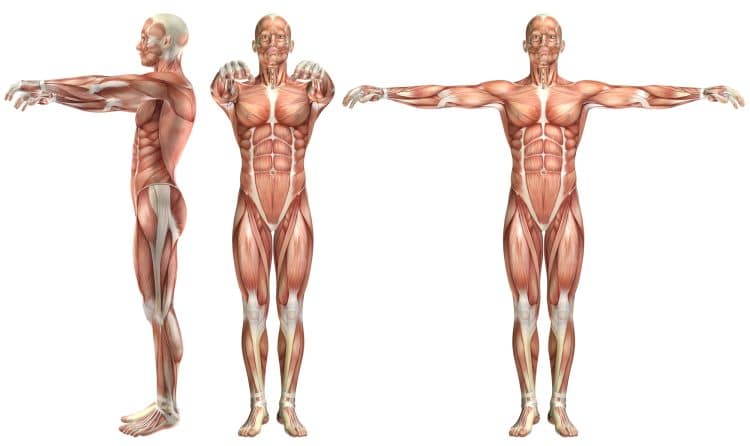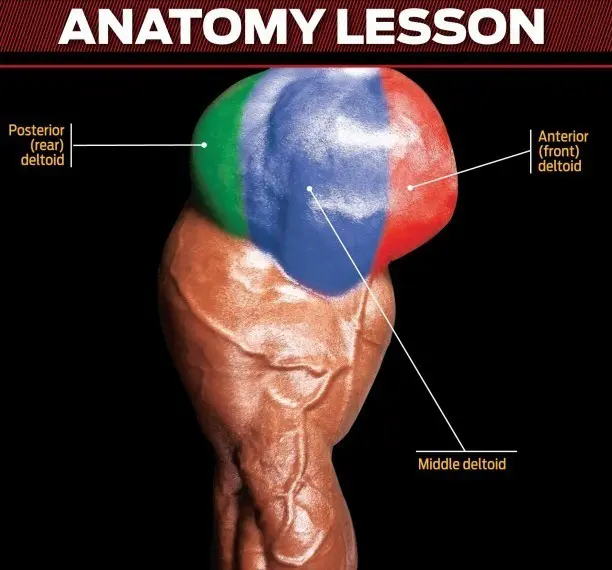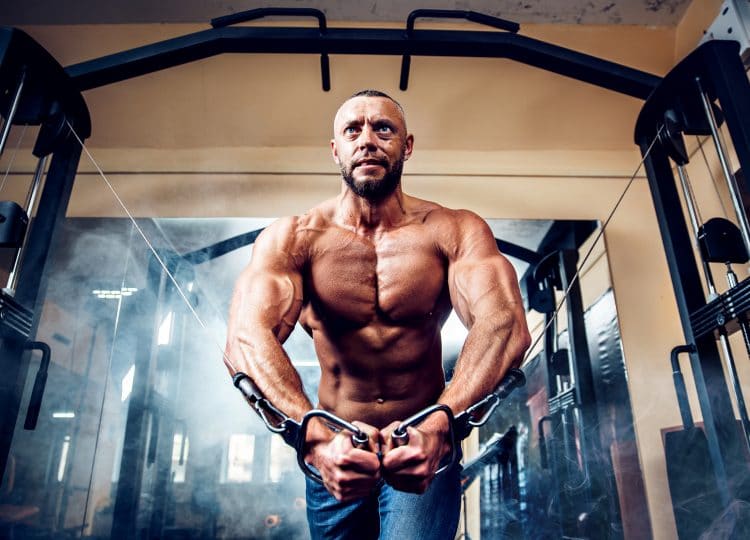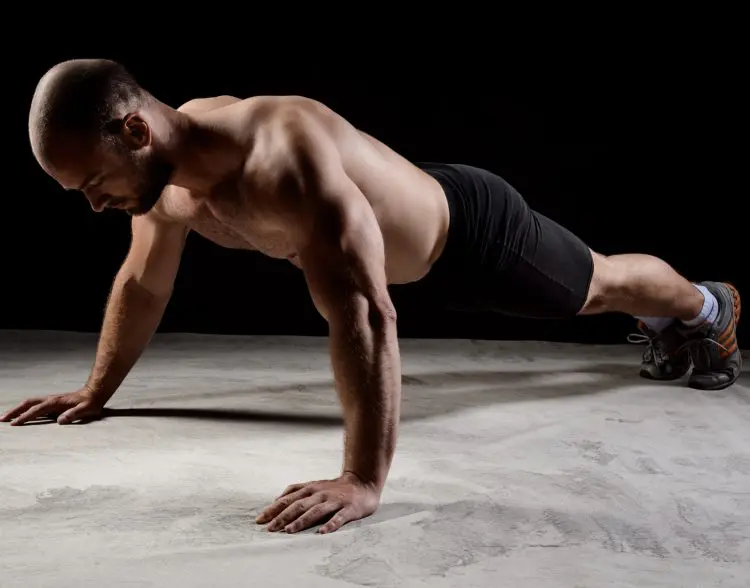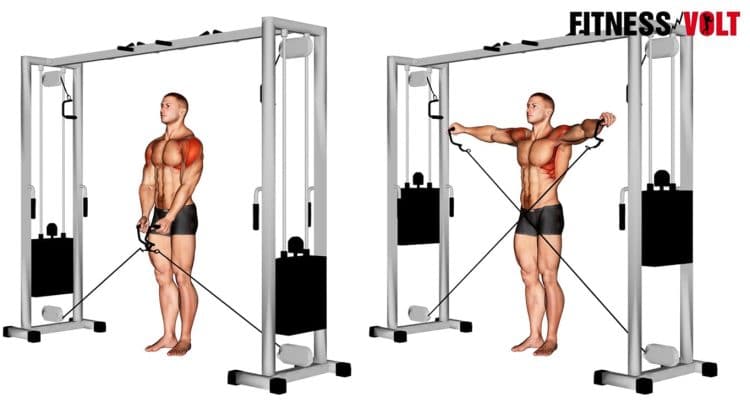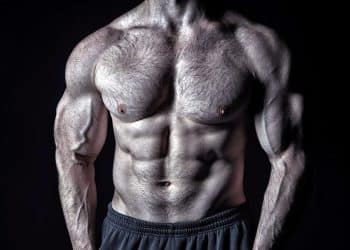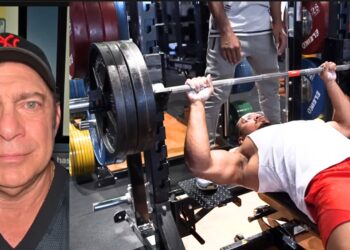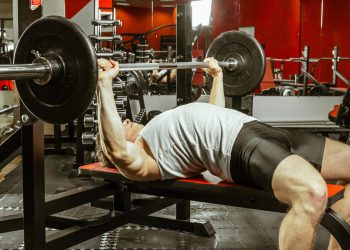Do you have a favorite pair of old jeans? Or maybe some sneakers you love to wear, despite being a bit grubby and worn? If you do, you probably hang on to them because they’re comfortable. You slip on your jeans or sneakers and instantly feel at home.
While comfort is great for clothes and shoes, it’s the last thing you need for productive workouts. If your workout is comfortable, there is a very good chance that it’s not challenging enough to deliver the gains you want.
Many exercisers develop their workouts over months or even years, gradually gathering a list of favorite exercises that they’re reticent to part with. As a result, every leg, chest, back, and shoulder workout remains the same.
While you DO need to follow a consistent training program to build muscle and strength, there is a massive difference between consistent and unchanging. To keep building muscle and getting stronger, you need to gradually increase your weights and/or reps, experiment with higher and lower training frequencies, and even adopt different split routine configurations from time to time.
If you don’t, your progress will soon grind to a halt, and you could even find yourself in a long-term training rut. So, as the saying goes, if you want to change yourself, you’ve got to challenge yourself. That means getting out of your comfort zone and embracing new workout methods.
If your chest and shoulder development has plateaued, we’ve got a new workout for you to try.
Level Up Your Fitness: Join our 💪 strong community in Fitness Volt Newsletter. Get daily inspiration, expert-backed workouts, nutrition tips, the latest in strength sports, and the support you need to reach your goals. Subscribe for free!
You may look at it and think, “well, I’d never do that in MY workouts,” but that’s entirely the point! By doing something new and unusual, you will trigger renewed muscle growth.
So, while you don’t need to throw out your favorite jeans or sneakers, you SHOULD try a new workout from time to time. Use this program for the next 6-8 weeks to jumpstart your progress.
After that, you have our permission to go back to your favorite upper body workouts!
Chest and Shoulder Anatomy
While you don’t NEED to know everything about the structure and function of your chest and shoulders to get a good upper body workout, a little extra knowledge is rarely a bad thing. Learn the basic anatomy of the muscles you’ll be working in our chest and shoulder workout.
Pectoralis major
Known as the pecs for short, this is the large muscle located on the front of your chest. It makes up most of your chest bulk. There are three sets of fibers or heads that make up the pecs:
- The clavicular head – upper pecs
- The sternal head – mid-pecs
- The abdominal head – lower pecs
While it IS impossible to isolate any of the pec heads, you can emphasize each one by varying the angle of your upper arms. The primary functions of the pecs are shoulder joint horizontal flexion, adduction, and medial rotation.
Pectoralis minor
Pec minor is the smaller of the two chest muscles. Located underneath pectoralis major, this muscle is flat, small, and doesn’t contribute much to chest size. However, it’s still essential and assists your pec major while keeping your shoulders down and back.
Deltoids
The deltoids are your shoulder muscles. Like the pecs, there are three sets of fibers called heads. The three deltoid heads and their functions are:
- Anterior delts – located on the front of your shoulders, the anterior delts work with your pecs to flex and internally rotate your shoulder joints.
- Medial delts – responsible for shoulder joint abduction. This head is located on the side of your shoulders and gives your upper body its width.
- Posterior delts – located on the back of your shoulder, the posterior delts horizontally extend and externally rotate your shoulder joints. The posterior deltoids are an important and often undertrained postural muscle.
Triceps
While this IS a chest and shoulder workout, it’s pretty tough to train these muscles without involving your triceps. Located on the back of your arm and responsible for elbow extension, your triceps are involved in every chest and shoulder pushing exercise.
Chest and Shoulder Workout Overview
This workout is designed to be done as part of a split routine. Do it once or twice a week. If you choose to train your chest and shoulders twice, use non-consecutive days, e.g., Monday and Thursday, to allow plenty of time for rest and recovery.
To get the most from this workout and minimize your risk of injury, make sure you warm up before you begin. Start with 5-10 minutes of easy cardio followed by dynamic mobility and flexibility exercises for the joints and muscles you are about to use. End your warm-up with 50-100 reps of band pull-aparts to really get your shoulders moving.
For this workout, you’ll be doing both compound and isolation exercises for your chest and shoulders, using a range of set and rep schemes. This will build muscle and strength, so it’s basically a powerbuilding program.
The Workout
| Exercise | Sets | Reps | Recovery | |
| 1 | Paused bench press | 5 | 5 | 3 minutes |
| 2 | Incline dumbbell squeeze press | 4 | 6-8 | 90 seconds |
| 3a | Cable crossover | 3 | 10-12 | 60 seconds |
| 3b | Push-ups | AMRAP* | ||
| 4 | Bradford press | 4 | 6-8 | 90 seconds |
| 5 | Cable lateral raise | 3 | 10-12 | 60 seconds |
| 6 | Prone incline dumbbell shoulder press | 3 | 10-12 | 60 seconds |
Program notes:
*AMRAP = As Many Reps as Possible; just rep out to failure.
Exercises 3a and 3b are to be done as a superset. Do the first exercise (3a) and then, without resting, do the second one (3b). Rest as directed, and then repeat the pairing. Do three complete supersets before moving on to the next exercise (#4).
Exercise Descriptions
Get the most from this workout by doing each exercise with perfect form. Not only will this make your training more productive, but it will also reduce your risk of injury.
1. Paused bench press
Target muscles: Entire chest
No chest workout would be complete without the bench press. But, instead of lowering the bar fast and bouncing it off your chest, negating most of the benefits, with this version, you’re going to lower the bar smoothly, pause, and then push it back up.
This reduces momentum, increases time under tension, and protects your joints, too. However, the pause also makes bench presses more challenging, so use less weight to avoid getting pinned under the bar.
How to do it:
- Lie on a flat bench and hold the bar with an overhand, slightly wider than shoulder-width grip. Pull your shoulders down and back, brace your abs, and push your feet firmly into the floor. Unrack the bar and hold it over your chest.
- Bend your elbows and lower the bar smoothly to your chest.
- Without relaxing, hold the bar on your chest for three seconds.
- Drive the bar up powerfully, lower, and repeat.
- This exercise is best done with a spotter on hand or in a power rack. In a pinch, you could also use a Smith machine.
2. Incline dumbbell squeeze press
Target muscles: Upper, Inner chest
Level Up Your Fitness: Join our 💪 strong community in Fitness Volt Newsletter. Get daily inspiration, expert-backed workouts, nutrition tips, the latest in strength sports, and the support you need to reach your goals. Subscribe for free!
While most people are familiar with incline dumbbell bench presses, most do them with a medium-width, overhand grip. This variation is a little different in that you’ll be using a narrow, parallel grip and pressing the weights together, which will increase inner chest activation.
How to do it:
- Sit on a 30 to 45-degree exercise bench with a dumbbell in each hand. Using a neutral grip, place and press the dumbbells together. Pull your shoulders down and back, and brace your abs.
- Lie back on the bench and hold the dumbbells on your chest. Press the weights inward as hard as you can. Tuck your upper arms into your sides.
- Push the weights up and over your chest until your arms are straight but not locked. Keep the tension on your pecs by continuing to press the weights together.
- Lower the dumbbells to your chest and repeat.
- Do not ease up on the inward pressure; keep pushing the dumbbells together for the entire duration of your set.
3a. Cable crossover
Target muscles: Lower, inner chest
Cable crossovers are an isolation exercise for your chest. Done from high to low, they emphasize your lower, inner chest. Get the most from this exercise by squeezing your pecs as hard as you can between reps.
How to do it:
- Attach two D-shaped handles to the top pulleys on a cable crossover machine. Hold one handle in each hand and stand in the middle of the weight stacks, arms outstretched and about shoulder height. Brace your abs and adopt a split stance for balance. Lean forward slightly from your hips. Your elbows should be a little bent but rigid.
- Without bending your elbows more, draw your arms forward and down, so they meet in front of your hips.
- Return to the starting position and repeat for the specified number of reps.
- On completion, immediately move to the next exercise – push-ups.
Learn more about cable crossovers here.
3b. Push-ups
Target muscles: Entire chest
A lot of people dismiss push-ups as being too easy to build muscle or strength. However, now that your pecs are fatigued, you should find them a whole lot more challenging. Paired with cable crossovers, this final chest exercise should leave your pecs feeling pumped.
How to do it:
- Squat down and place your hands on the floor, fingers pointing forward and just outside shoulder-width apart. Walk your feet back, so your body is straight. Brace your core and rotate your elbows inward to engage your lats.
- Bend your arms and lower your chest down to within an inch of the floor.
- Push yourself back up and repeat.
- You can also do push-ups using raised handles to increase the range of motion or with your feet raised to put more weight on your arms.
- Continue until you are unable to do any more reps (AMRAP). Rest a moment, and then repeat the cable crossover/push-up pairing.
4. Bradford press
Target muscles: Anterior, medial, and posterior deltoids
You won’t see many people doing the Bradford press nowadays, and that’s a shame. This combination of front and behind-the-neck shoulder presses keeps your delts under constant tension, creating the ideal environment for muscle growth.
You WILL need good shoulder mobility to do this exercise, and it’s best avoided if you have shoulder pain. That said, if you CAN do it, you will undoubtedly appreciate the delt-building power of the Bradford press.
If you can’t do Bradford presses, do regular overhead dumbbell, barbell, or Arnold presses instead.
How to do it:
- Hold a barbell in front of your shoulders using an overhand, slightly wider than shoulder-width grip. Your forearms should be vertical and your elbows below your hands.
- Press the weight up and over your head, and then lower it behind your neck. The bar should just skim the top of your head, and your elbows should remain bent throughout.
- Push the bar back up and over your head, returning it to the front of your shoulders.
- That’s one rep, so keep going.
5. Cable lateral raise
Target muscles: Medial deltoids
You can do lateral raises with dumbbells, but cables keep your delts under constant tension. Do this exercise using one arm at a time or, for efficiency, raise both arms at once. Don’t go too heavy with this exercise. Instead, focus on slow, smooth movements and maximizing muscle tension.
How to do it:
- Attach a D-shaped handle to the lowermost pulleys on a cable crossover machine. Standing between the two weight stacks, hold the left-side handle in your right hand and vice versa, so the cables cross in front of your hips. Bend your legs slightly for stability and brace your core.
- Keeping your elbows slightly bent but rigid and your wrists straight, raise your arms up and out to the side to form a T-shape.
- Lower your arms and repeat.
6. Prone incline dumbbell shoulder press
Target muscles: Posterior deltoids
When it comes to posterior delt training, most people rely on exercises like rear delt flyes, face pulls, and band pull-aparts. While there is NOTHING wrong with any of those exercises, there are other ways to work your rear delts.
Prone incline dumbbell shoulder presses put your rear delts, mid-traps, and rhomboids under constant tension and are also a tremendous postural exercise.
How to do it:
- Set your incline bench to about 45-degrees. With a dumbbell in each hand, lie face down on the bench, with your head uppermost. Pull your shoulders down and back and lift the dumbbells to your shoulders.
- Without arching your lower back or lifting your chest off the bench, press the weights forward and up, keeping them in line with your torso.
- Return the dumbbells to your shoulders and repeat.
Chest and Shoulder Workout – Wrapping Up
Your chest and shoulders are two of the “showcase” muscle groups. They’re eye-catching and make up a considerable chunk of your upper body mass. That means you can’t afford to get complacent when training them. Train them hard and often to maximize your strength and muscular development.
Of course, you need to balance all those pushing exercises with plenty of pulling exercises for your back and biceps, too, but that’s a whole different article!
Keep your upper body workouts fresh and productive by changing things up every 4-8 weeks. The moment you start to feel comfortable with your workout, it starts to lose some of its transformative power.
Use our new chest and shoulder workout to shake up your training, and then, in a month or two, jump on a new program and shake things up again.
That’s how you maintain your muscle-building progress!

